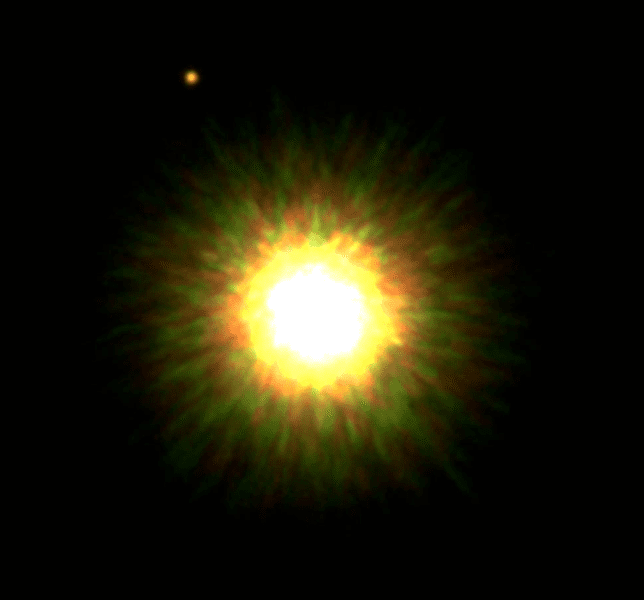 | ||
Similar Mu1 Scorpii, IRAS 17163‑3907, Gliese 682, OGLE‑2005‑BLG‑390L | ||
1RXS J160929.1-210524 (also known as GSC 6213-1358 or PZ99 J160930.3-210459) is a pre-main-sequence star nearly 470 light-years away in the constellation of Scorpius.
The star was identified as a member of the Upper Scorpius subgroup of the Scorpius-Centaurus Association by Thomas Preibisch and coauthors in 1998, and originally assigned an age of 5 million years old based on its group membership. A more recent analysis of the ages of the stars in the Upper Scorpius group pegs its average age at 11 million years.
Planetary system
On 8 September 2008, it was announced that astronomer David Lafrenière and collaborators used the Gemini Observatory to take pictures of the star which appeared to show a planet (designated 1RXS J160929.1-210524 b). The apparent planet is very large—about eight times the mass of Jupiter, orbiting the star at a distance of 330 AU (roughly 50 billion kilometres or 31 billion miles). The orbital status of the companion planet was confirmed in a paper submitted on 15 June 2010 to The Astrophysical Journal. This made it the smallest known exoplanet orbiting its host at such a distance. It is also the second announced directly imaged exoplanet orbiting a sun-like star (after GQ Lup b), and the 2nd directly imaged exoplanet to have spectrum taken (after 2M1207b).
The discoverers note that the object's location far from its star presents serious challenges to current models of planetary formation: the timescale to form a planet by core accretion at this distance from the star would be longer than the age of the system itself. One possibility is that the planet may have formed closer to the star and migrated outwards as a result of interactions with the disk or with other planets in the system. An alternative is that the planet formed in situ via the disk instability mechanism, where the disk fragments because of gravitational instability, though this would require an unusually massive protoplanetary disk.
With the upward revision in the age of the Upper Scorpius group from 5 million to 11 million years, the estimated mass of 1RXS J1609b is approximately 14 Jupiter masses, i.e. above the deuterium-burning limit. An older age for the J1609 system implies that the luminosity of J1609b is consistent with a much more massive object, making more likely that J1609b may be simply a brown dwarf which formed in a manner similar to that of other low-mass and substellar companions.
